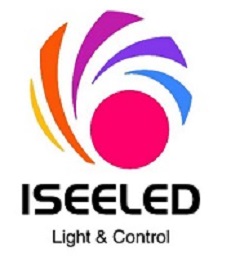The LED Controller is a switch problem that controls various positions in the LED lamp circuit through chip processing. With the continuous popularization of LED light sources, more and more customers use LED controllers. Many customers can't start with the controller purchase. Now the first LED network solves the mainstream
Led Controller problems on the market as follows:
1. Low-voltage LED product high-power controller
Low-voltage LED products generally have a design voltage of 12V-24V, and the number of LEDs per circuit is 3-6 series. The resistors are used to reduce current limit, and each loop current is less than 20mA. An LED product consists of multiple loop LEDs. The advantage is low voltage, simple structure and easy design. The disadvantage is that the current is large when the product scale is large, and a low-voltage switching power supply is required. Due to the shortcomings of the products, low voltage is not possible to transmit electricity over long distances, and is limited to products with small volume, such as signature characters and small patterns. According to this feature, the controller design specification: 12V selects 75A/30V MOS power tube control, output current 8A/channel; 24-36V selects 60A/50V MOS power tube control, output current 5A/路. Users can select the number of controllers according to the above specifications. The RGB controller series can be used to achieve jump and fade effects. Commonly used are QX308/RF and CT309/RF. Note that the LED must be a common (+) pole connection method, the controller controls the cathode (-) pole, and the controller does not include a low voltage power supply.
Second, high voltage LED product controller
The design voltage of high-voltage LED products is AC/DC 220V voltage, the number of LEDs in each circuit is 36-48 series, each loop current is below 20mA, there are two current limiting methods, one is resistance current limiting, this way resistance work It is more expensive. It is recommended to use a 1/4W metal mold resistor in series with every 4 LEDs to evenly distribute heat. This connection is the most stable and reliable at present; the other is resistor-capacitor series current limiting. Part of the voltage drop on the capacitor, the power consumption of the resistor is small, and can only be used in a stable long-light state. If the flash capacitor stores energy, the voltage is doubled and the LED is easily damaged. All LEDs that use the controller must use a resistor current limiting method. The LEDs generally have one meter per loop, 5W power, and 35W per meter. If the gradation method is used, pay attention to the load matching. The illuminating distribution characteristics of the neon lamp and the LED are different, and the same circuit cannot mix different types of loads.
Third, low-voltage LED products, DMX512 controller
Many architectural decoration or lighting projects require a large number of LED lighting products, which require more control channels. There are currently two ways: using serial signal transmission for control purposes; the other is to use parallel signals, mainly DMX512 signals. . The DMX512 signal avoids the disadvantage that the serial signal chip is easily damaged and unreliable, because its signal lines are connected in parallel, so even if there is a problem with one control unit, it will not affect other units, that is, other lamps will still be normal. Variety. Another advantage is that DMX512 is an international standard protocol. Products from multiple manufacturers that conform to the protocol can be directly compatible, which brings great convenience to system design and post-maintenance. The DMX512 control system can be divided into a main controller and a sub-controller. The main controller is responsible for converting the effect into a DMX512 signal and sending it to the sub-controller. The sub-controller is responsible for receiving the signal and then converting it into a PWM signal to control the brightness of the luminaire. Therefore, what effect a DMX512 system can achieve depends on The function of the main controller. Each DMX512 signal can transmit up to 512 channels of data. If it is RGB luminaire, the controller can have up to 170 pixels, such as DMX300 controller. If you need to control more luminaires, you can use DMX400 controller, she can control 1024 controllers. Channel (340 pixels).
Conclusion: Through the above explanation of the characteristics of various types of LED product controllers and some of them, we can make the choice of LED controllers according to their own needs.


![]() November 03, 2020
November 03, 2020
